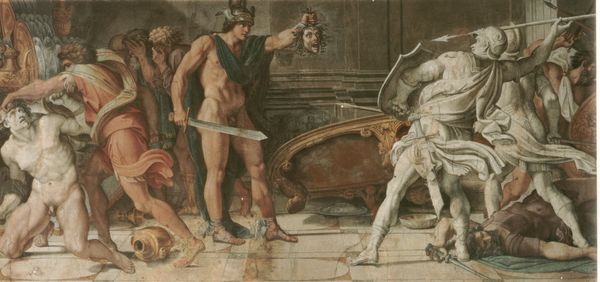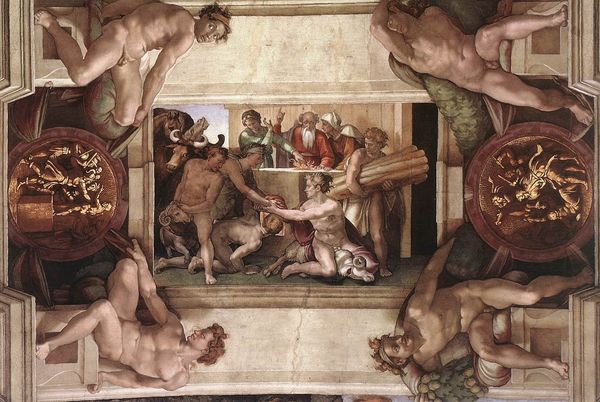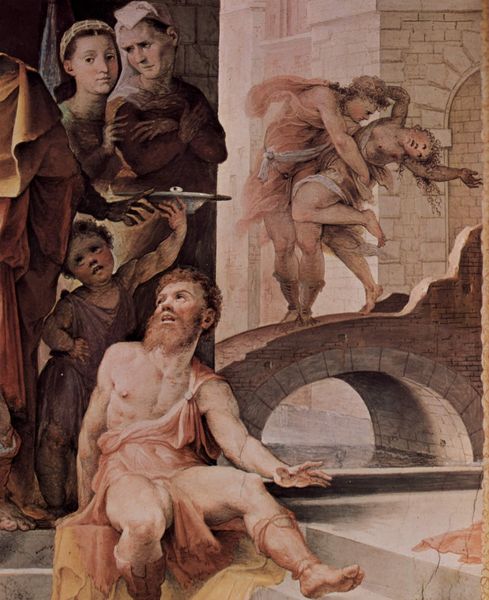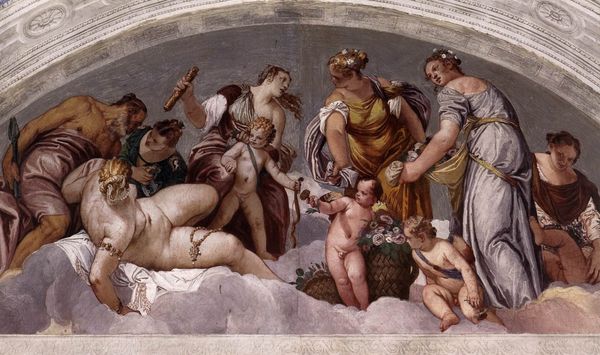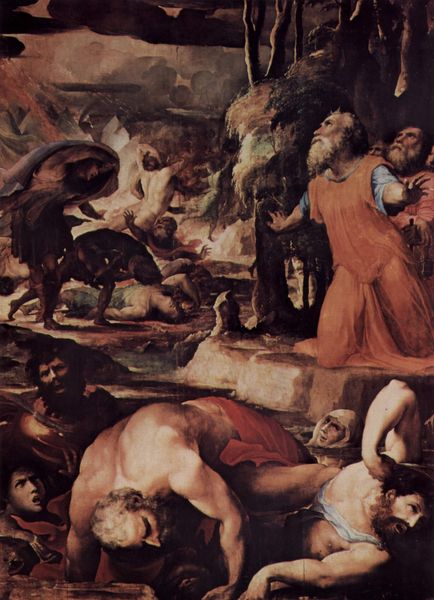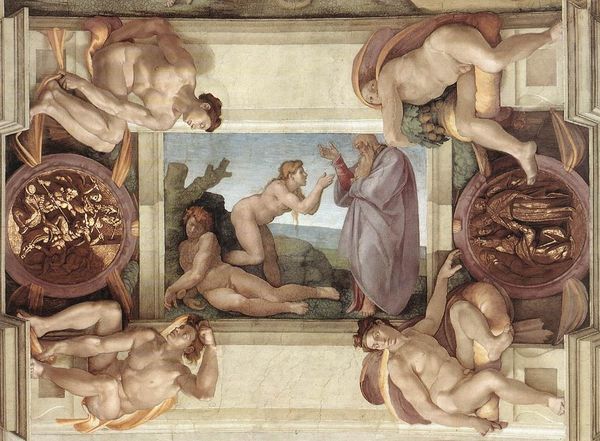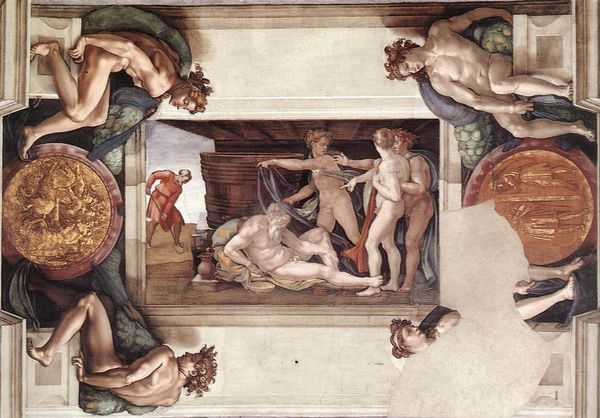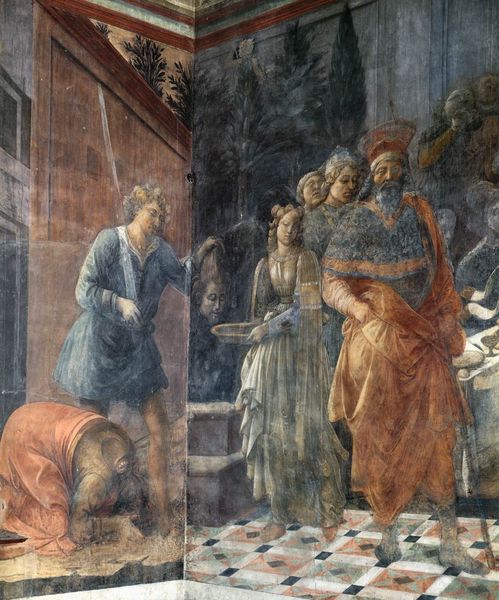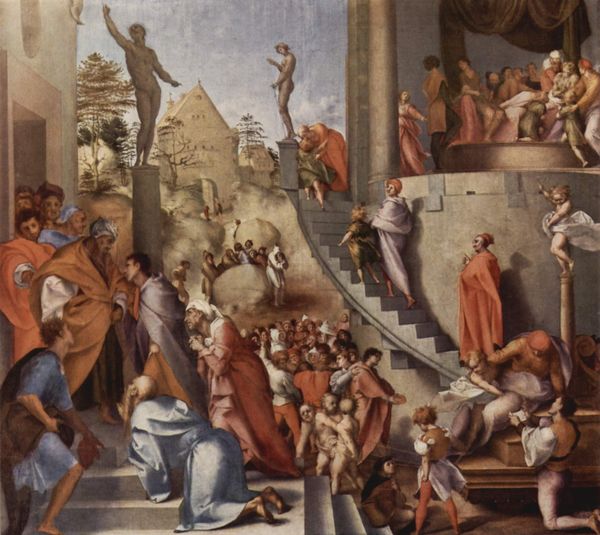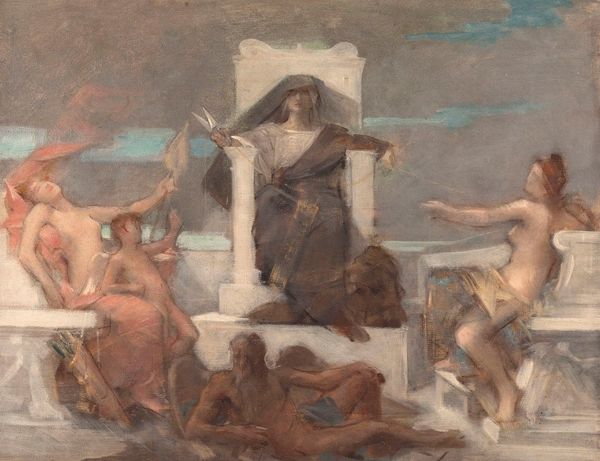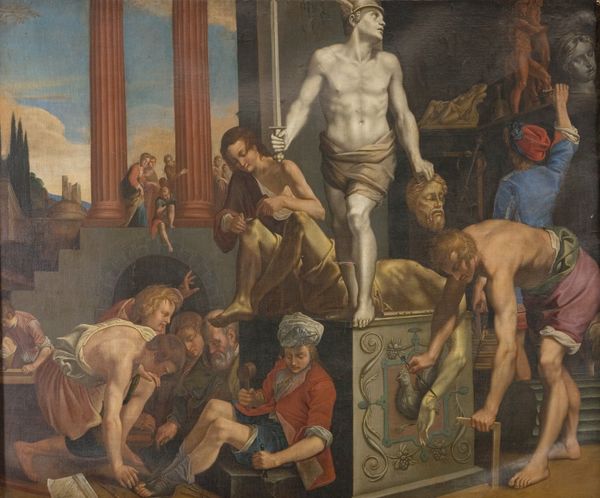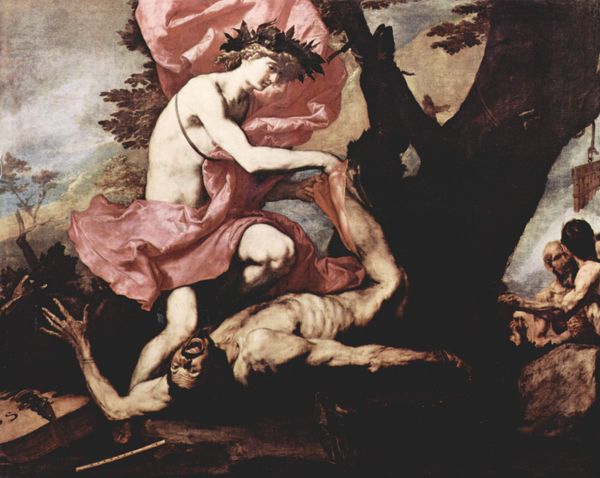
fresco
#
charcoal drawing
#
mannerism
#
fresco
#
oil painting
#
mythology
#
history-painting
#
academic-art
#
charcoal
#
italian-renaissance
#
nude
Copyright: Public domain
Francesco Salviati, also known as "Cecchino," painted this detail of "Bad Der Bathseba" using fresco, a technique where pigments are applied to wet plaster. The artwork's appearance is intrinsically linked to this method; the colors are muted and earthy, owing to the natural pigments available and their interaction with the lime in the plaster. The texture is rough, almost grainy, reflecting the surface beneath. Salviati would have worked quickly, in sections, as the plaster dried, demanding precision and forethought. The process itself is labor-intensive, requiring skilled artisans to prepare the walls, mix the plaster, and apply the pigments. Fresco painting was a common practice in the Renaissance, rooted in a deep understanding of materials and craftsmanship. This connection to place and the artist's expertise elevates the social and cultural significance of the artwork, moving beyond mere aesthetic representation. Ultimately, understanding "Bad Der Bathseba" requires appreciating the symbiosis of materials, technique, and the cultural context of Renaissance artistry, blurring the lines between art and craft.
Comments
No comments
Be the first to comment and join the conversation on the ultimate creative platform.
